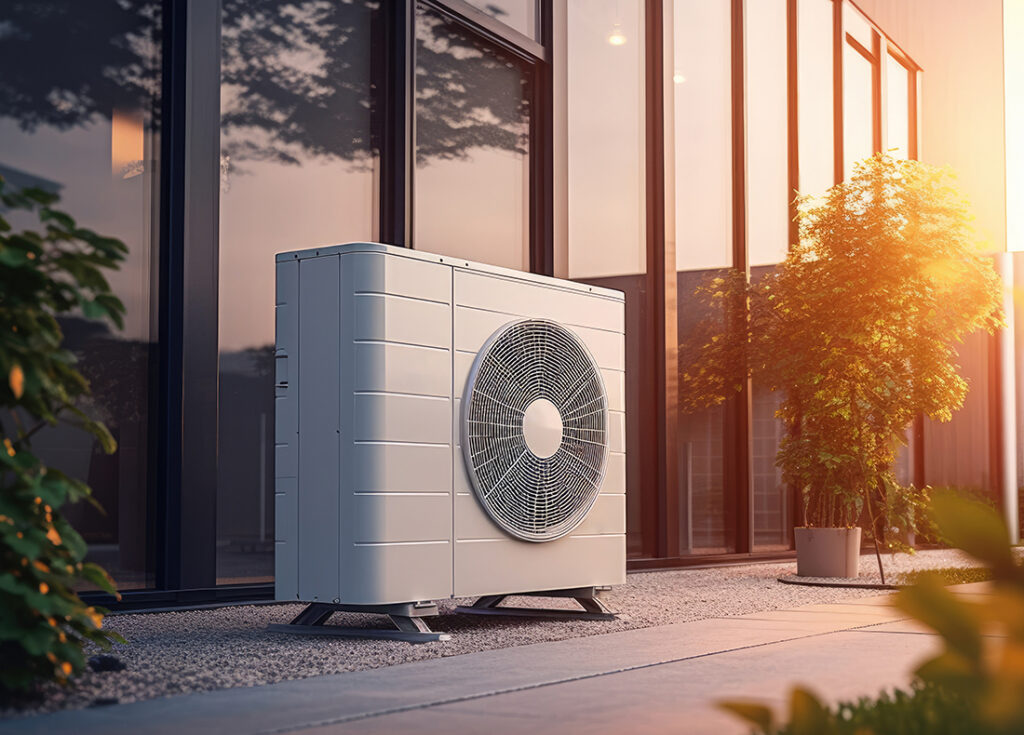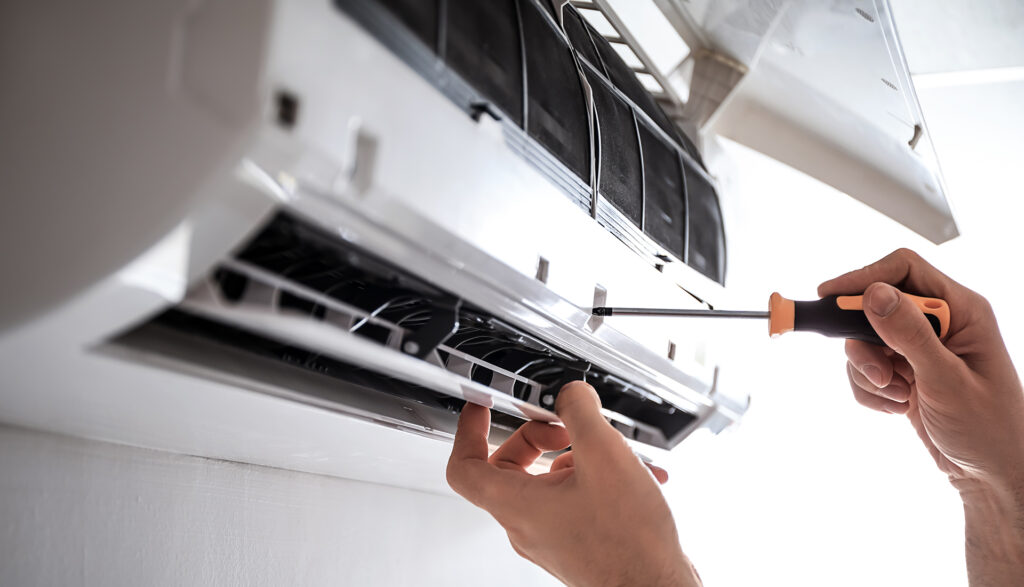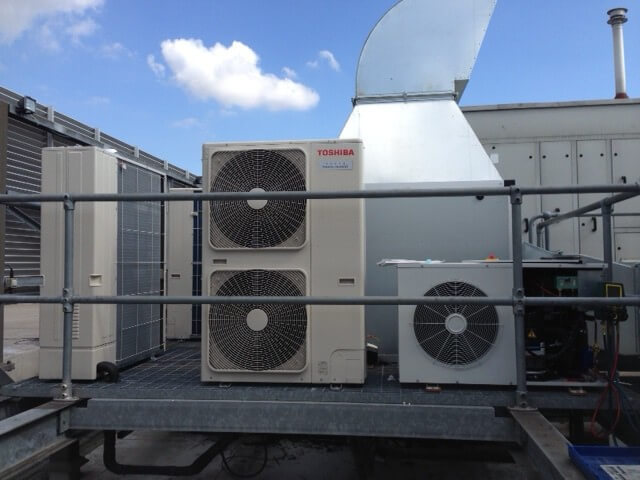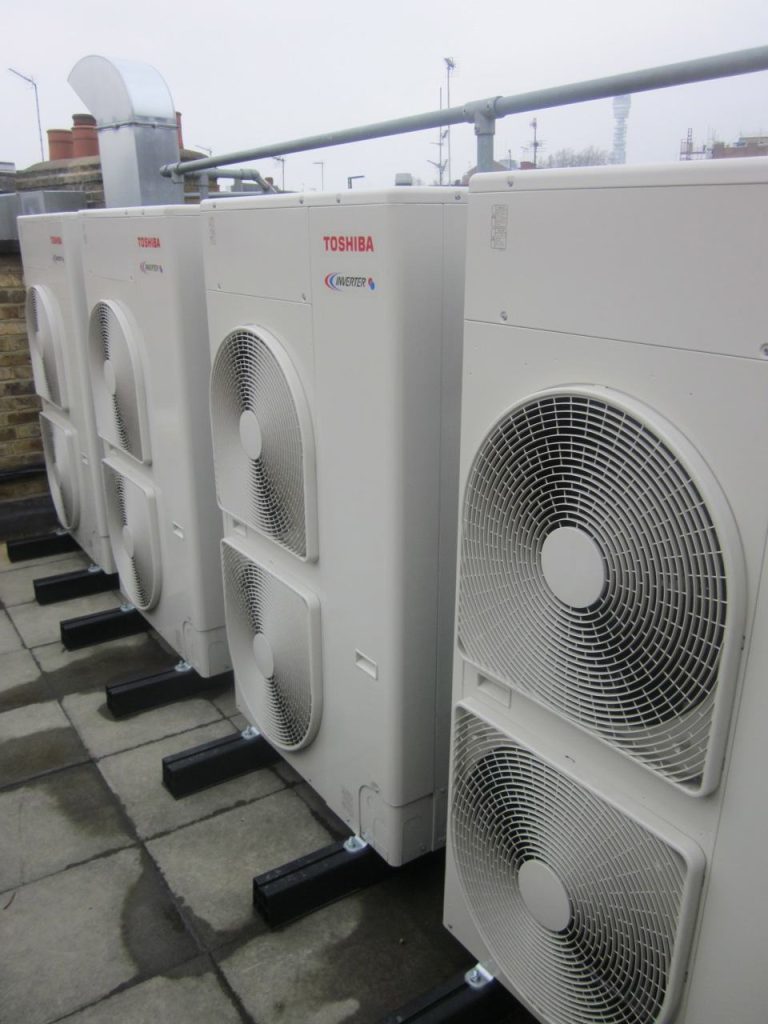What You Need To Know About R32 – The Leading R410A and R22 Replacement
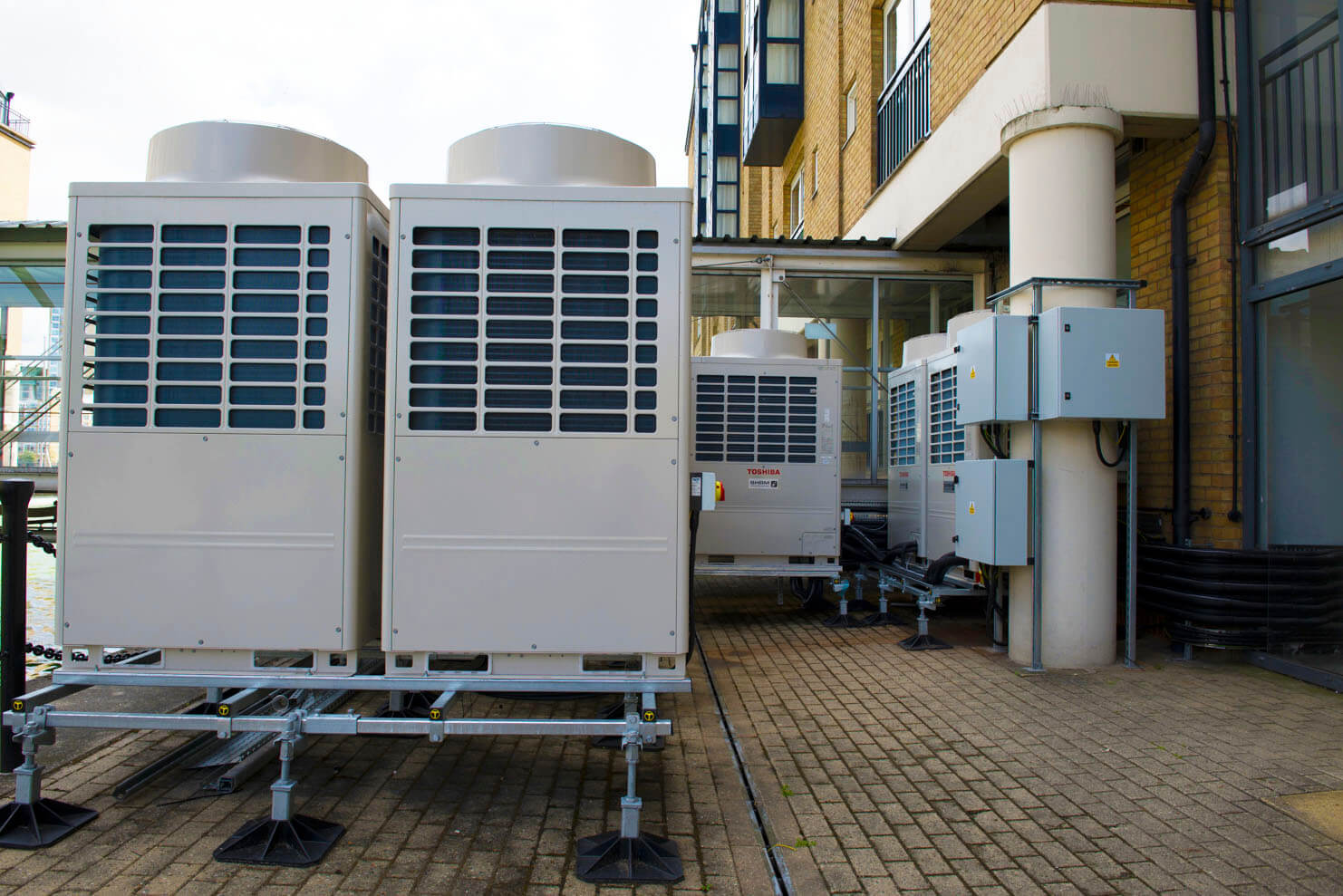
Estimated reading time 6 minutes
In a previous article we discussed R22 replacement in older air conditioning and refrigerant systems and the reasons behind it.
In brief, we know that chlorine, part of the group of chlorofluorocarbons (CFCs) and hydrochlorofluorocarbons (HCFCs) refrigerants damages the ozone layer and is therefore detrimental to the environment. To control emissions from fluorinated greenhouse gases (F-gases), including HFCs, the European Union brought in the 2014 F-gas Regulation. This regulation has one objective – to reduce F-Gas emissions by 79% between 2015 and 2030.
As a consequence of this, many of the refrigerants used in the past have been included in the list of substances either to be phased out of production or proposed for phase-down in the future.
In the case of R22 it has been illegal to use virgin, recycled and reclaimed R22 to maintain or repair air conditioning equipment since 1 January 2015. More recently, the Kigali Amendment to the Montreal Protocol of the use of refrigerants such as R410A. The phase down is expected to begin sometime in the 2020’s.
Environmentally Friendly or Lower Global Warming Potential (GWP) Refrigerant Alternatives
The European Commission talks about climate friendly alternatives to HCFCs and explains that “Due to different thermodynamic and safety properties of the alternatives, there is no ’one size fits all’ solution. The suitability of a certain alternative must be considered separately for each category of product and equipment and in some cases also take into account the geographical location where the product and equipment is being used.”
If we look to some of the leading air conditioning and refrigeration manufacturers like Mitsubishi Electric and Daikin we can see that they are moving away from R410A refrigerant whose cost has increased by over 600%, and moving towards R32-ready air conditioning systems. R-32 is seen as the leading refrigerant replacement for R410A.
Why R32?
So what makes R32 a better refrigerant than R410A or R22? Why are so many companies making R32 their refrigerant of choice when developing new air conditioning equipment?
In order to look at this we need to understand two measurements: Oxygen Depletion Potential (ODP) the relative amount of degradation to the ozone layer it can cause, with trichlorofluoromethane (R-11 or CFC-11) being fixed at an ODP of 1.0 and Global Warming Potential (GWP) is a measure of how much heat a greenhouse gas traps in the atmosphere up to a specific time horizon, relative to carbon dioxide e.g. in the case of R12 which has a GWP of 10,900, if one kilogram is released into the atmosphere it would have 10,900 times the harmful effect of one kilogram of carbon.
Here are a few of the advantages R32 holds over R410A:
- R22 has an Oxygen Depletion Potential (ODP) of 0.055 and a GWP is 1810. R410A has an ODP of 0 and a GWP of 2090. In comparison R32’s ODP is 0 so will not deplete the ozone layer, and its GWP is only approximately 1/3 that of R-410A at only 675.
- R32 is F–gas phase-down compliant.
- As a single component refrigerant, not a refrigerant blend, R32 should be easier to handle and to recycle because it doesn’t separate.
- R32 is used in the manufacture of R410A which is a blend of 50% R32 & 50% R125 so it is readily available and relatively inexpensive to produce.
- There are two toxicity classes for refrigerants defined in International Standard ISO 817. They are class A – lower chronic toxicity and class B – higher chronic toxicity. R32 is categorized as a class A refrigerant. Compared to all other class A refrigerants such as R22, R410A, R134a, R290 (Propane) and R600a (Isobutane), R32 has the highest (safest) Acute Toxicity Exposure Limit (ATEL) of 220,000 ppm.
- R32 has a higher critical temperature which yields a higher Coefficient Of Performance (COP). The COP of a refrigerator, air conditioning system or heat pump is the ratio of useful heating or cooling provided to the amount of work required. The higher the COP the lower the operating costs.
- The latent heat of vaporization of R32 is higher than R410A so the heat needed to evaporate R32 is greater than that of R410A. Therefore the required mass flow rate per unit cooling capacity is smaller for R32 which results in a higher COP.
- The volumetric cooling capacity (the cooling capacity per unit volume of vapour refrigerant at the outlet of evaporator and the volume of refrigerant handled by the compressor for the given fluid) of R32 is higher than that of R410A. This means that there can be a reduction in pipe size (smaller pipe diameters) which in turn can lead to increases in the efficiency of the system, lower carbon emissions and lower energy costs.
- As R32 air conditioning systems use up to 20% less refrigerant than R410A equivalents this can contribute to lowering a building's carbon footprint.
The one negative regarding R32 is that it is classified as “mildly flammable” or “lower flammability” according to the International Standard for Refrigerant Designation and Safety Classification, ISO 817:2014. However despite its classification R32 has been reported to be very difficult to ignite.
With the information above it’s easy to understand why R32 is seen as the leading replacement refrigerant for R410A.
Need Your R22 Air Conditioning System Replaced?
Rather than being seen as a burden companies should view the replacement or upgrading older R22 air conditioning systems as an opportunity to move to more efficient and cost-effective systems. In fact today’s air conditioning systems are as much as 50% more energy efficient.
Phasing out your R22 air conditioning system will also allow your company to become more environmentally friendly and to improve your carbon footprint. As an added incentive any UK company switching from R22 to newer air conditioning may also be eligible for tax relief under the Enhanced Capital Allowance (ECA) Scheme. Information on which systems are eligible can be found on the government’s Energy Technology Product List (ETL) page.
To find out how Synecore can help get in touch with our head office in Sittingbourne, Kent for more information. Call 01795 509509 or email us at sales@synecore.co.uk. Be sure to enquire about our our Planned Preventative Maintenance (PPM) service which gives customers all year round peace of mind. Included in our PPM package is our 24/7 call out, compliancy with F-gas regulations and TM44 certification.
